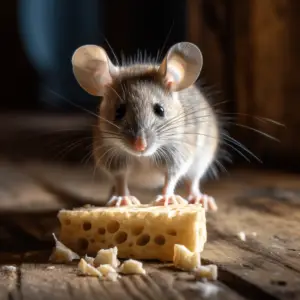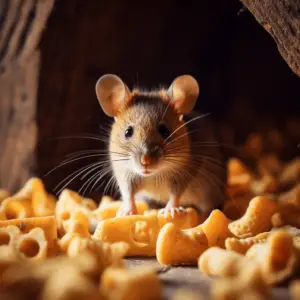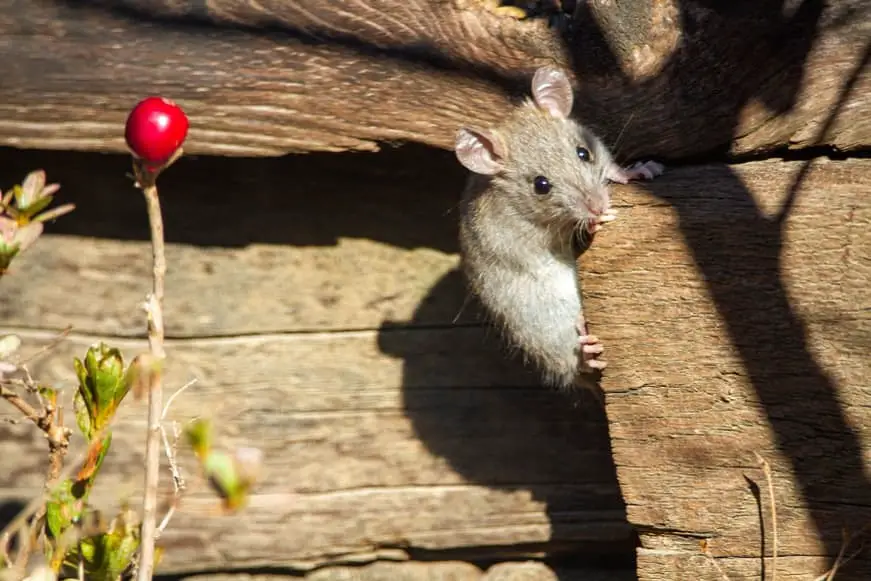Mouse Infestations, Mice and other rodents such as rats are probably the most persistent nuisance in any home. They are incredibly fast, crafty, intelligent, and adaptable which makes them very hard to eradicate.
Rodent control demands an average fee of $340 for a single household with every visit or treatment. For your safety and peace of mind, a yearly plan for rodent and pest control is the best strategy.
As is the case with most pests, they almost always tend to be heavy breeders which is an added problem when dealing with mice. Mice, like humans, are non-seasonal breeders which means they breed all year long.
At between 4-7 weeks mice begin to breed and a single female will birth up to five litters a year each litter averaging between six and eight pups. A single mouse therefore can produce another sixty mice in one year.
The fact that they can eat anything is an advantage for mice and rats. The biggest concern, however, is the potential for deadly diseases that these creatures bring with them.
Their ability to go anywhere and eat anything means they will come into contact with disease-causing microorganisms which become even more dangerous after incubating and mutating in their bodies. Most of the illnesses that they could transfer to humans tend to be morbid or fatal.
There are many ways of getting rid of mice or at least preventing them from inhabiting your home and your immediate environment and often, rodent control will place mouse traps strategically around your property to catch mice allowing you to dispense with them.
Table of Contents
How to humanely kill a mouse stuck in a trap

Just because the mice are a nuisance does not mean they must suffer cruelty in death. In fact, in many states, animal cruelty is criminal and could cost you a hefty fine. Mouse Infestations your traps have done their job, it is left to you to do yours and kill the creature humanely.
The RSPCA or the Royal Society for the Prevention of Cruelty to Animals defines humane killing of an animal as; when an animal is either killed instantly or rendered insensible until death ensues, without pain, suffering, or distress.
Snap traps
A well-designed snap trap should spare you the horrible task of having to kill the mouse yourself. When placed appropriately, a snap trap should instantly snap the mouse’s neck severing the spine.
The death is instantaneous and the animal does not suffer any knowledge or effect of the blow.
This is considered the most humane way to kill mice as well as being highly effective and hygienic as well. All you have to do is retrieve the dead animal and dispose of it properly, then restore the trap.
Once the trap begins to capture mice that you discover to still be alive then all you have to do is replace the traps.
This, however, is not a deterrent measure so if a particularly bad infestation is occurring, the traps cannot sufficiently kill away all the mice that are seeking to make your home theirs.
A blow to the head
If you are using live traps for example or if you have had the rare success of chasing down one and capturing it, you can kill it humanely by striking it on the head but your blow needs to be ‘sure’ for it to be humane kill.
It must target and dismember the cranial cavity or the spinal cord with enough force to cause instant death. Again, this will not deter other mice and is not a solution for the long-term eradication of this problem.
Suffocation
Mouse Infestations have caught a large number of mice in an elaborate trap designed to achieve this, it would be quite the task to strike each mouse on the head counting down to forty or fifty mice.
The job of getting rid of this many dead mice and starting over to do the same every week is simply too much work. Instead, leave the mice in the trap and suffocate them using a polythene bag.
Wrap a large polythene bag around the trap ensuring it cannot be accessed by the mice. Alternatively, you can transfer the mice into a sealed plastic chamber or cover the trap using a plastic container that cannot allow air to get through to the animals.
Whichever way you do it, the idea is to deprive the animals of oxygen and after they have exhausted what is in the trap, the carbon dioxide they will unknowingly be breathing will slowly knock them out rendering them unconscious or insensible.
As they continue to slumber and breathe the toxic odorless gas, multiple organ collapse from lack of oxygen will occur causing death that they will not feel or be aware of. This method also meets the conditions for a humane death.
Discard the dead animals accordingly and restore the trap.
Stunning

Stunning an animal with a powerful enough jolt to instantly crash the heart is also a humane way of killing a mouse stuck in a trap.
Mouse Infestations have a stun gun or any such equipment, you can deploy this method but having such a weapon in the house places you and your family in danger of receiving the same jolt accidentally.
While it may not be enough to harm a grown-up, people with undiagnosed heart issues, a sick individual, or a child is in danger since electrical jolts are in general very harmful to humans in many unpredictable ways even when the jolt is a small passing accident.
Owning a stun gun may also not be legal in your state so this method has some demerits.
Finally…
The most effective deterrent against mice is cat odor. Even baby mice that have never encountered a cat instinctively know the smell of cats and abhor it intensely.
Mice have no incentive to colonize any space where cats exist even when food is readily available. They will simply avoid the radius of any place where they can smell a cat which tends to be very wide.


